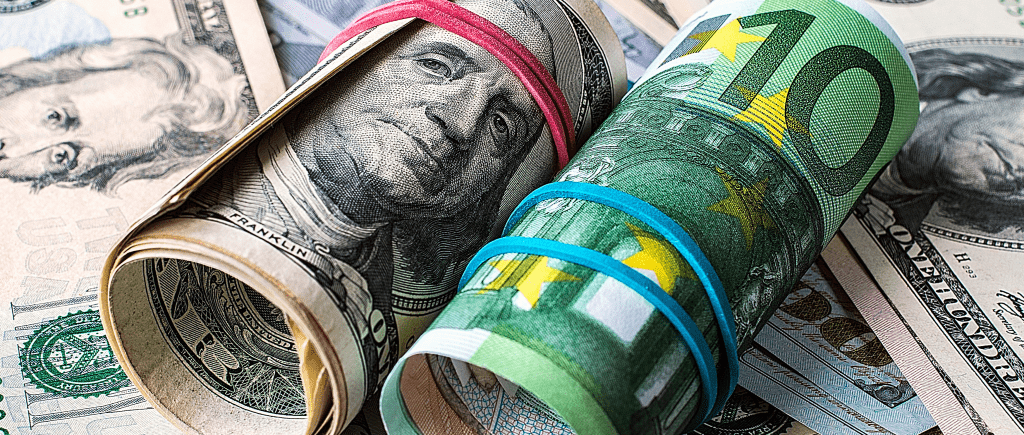The EUR/USD reached new weekly lows below 1.0700 despite the EU inflation breaking above the 8% threshold.
The euro retreats during the American session but bounced off daily’s lows in a high volatility trading session that witnessed the EUR/USD rallying near 1.0780 and falling to 1.0678, but is stabilizing. At 1.0726, the EUR/USD is trading below the 20-DMA and down 0.41%.
Global stocks remain trading with losses, illustrating a dampened mood. Due to month-end flows, the greenback remains buoyant, also underpinned by high US Treasury yields. The US Dollar Index, a measure of the buck’s value, gains 0.44%, up at 101.812, after briefly piercing the 102.00 mark. The US 10-year Treasury yield advances four bps, sitting at 2.842%.
In the European session, the Eurozone reported that inflation in the EU accelerated to 8.1% in May, up from 7.4% in April, while price pressures continued to broaden, indicating that’s not just energy lifting the figure.
Over the last two weeks, some ECB monetary policymakers expressed the need to normalize the EU monetary policy. ECB’s President Christine Lagarde said that the central bank might raise rates in July and September by 25 bps once the QE is finalized. Some of the ECB hawks showed discomfort regarding the previously mentioned and have continued commenting about moving fast amid increasing fears that inflation will get out of control.
Fed’s Christopher Waller said that he supports 50 bps for “several meetings,” and he’s not taking 50 bps off the table until inflation closes to the 2% target. Furthermore, inflation is “stubbornly high,” and the Fed would need to be prepared to do more, Waller said. It’s worth noting that regarding the balance sheet reduction, he noted that it’s equivalent to a couple of 25 bps rate hikes.
The US calendar featured the May CB Consumer Confidence, which rose by 106.4, better than the 103.9 expected. The data has revealed that inflation expectations for one year are at 7.4%, lower than April’s 7.5%. Additionally, Housing data was mixed but near the estimations, while the Fed Regional banks continued releasing their Manufacturing Indexes ahead of June’s 1 ISM Manufacturing PMI. Chicago’s PMI for May rose by 60.3, higher than the 55 expected, but the Dallas Fed Index contracted to -7.3, lower than April’s reading.
Technically; the EUR/USD pair’s daily chart depicts neutral-downward biased performance, despite rallying since the second half of May, from YTD lows near 1.0300, towards 1.0780s. In fact, the upward move caused the Relative Strength Index (RSI) to jump over the 50-midline, but of late, in the last two trading days, is poised to the downside, at 55.17.
The path of the EUR/USD pair of least resistance is slanted to the downside. The EUR/USD first support would be 1.0700. Break below would expose the May 31 low at 1.0678, followed by the May 25 cycle low at 1.0641, and then the May 23 daily low at 1.0556.

 Noor Trends News, Technical Analysis, Educational Tools and Recommendations
Noor Trends News, Technical Analysis, Educational Tools and Recommendations




